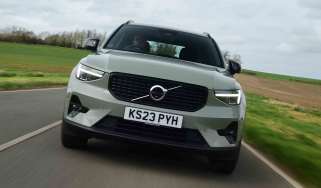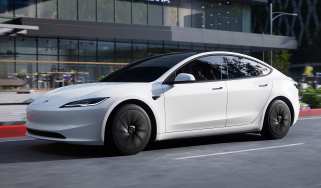What is a hybrid car? Mild hybrids, full hybrids and plug-in hybrids explained
Hybrids are everywhere but with mild hybrids, full hybrids and plug-in hybrids all available, understanding the technology can be hard.

Hybrid cars are everywhere these days, whether you’re browsing compact hatchbacks or hefty SUVs, and it’s no surprise why. They offer lower emissions, better fuel economy, and a lighter tax bill than traditional petrol and diesel cars. Acting as a stepping stone between internal-combustion engines and full-blown electric vehicles, hybrids combine a petrol or diesel engine with electric power for a smarter, more efficient drive.
It all kicked off in 2000 with the Toyota Prius, the UK’s first hybrid car, and things have moved on massively since then. Most manufacturers have jumped on the bandwagon, offering everything from mild hybrids (MHEVs) to plug-in hybrids (PHEVs). The hybrid market has become a patchwork of different technologies, each catering to a specific set of needs.
What is a hybrid?
At its simplest, a hybrid car combines two energy sources to reduce fuel consumption and emissions. Most commonly, this involves a petrol or diesel engine paired with an electric motor powered by a battery. This combination can work in various ways. Some hybrids, like range extenders or ‘series’ hybrids, rely entirely on electric motors to drive the car, using the combustion engine purely to generate electricity. Others, such as full hybrids, allow the engine and motor to work either together or independently, depending on the situation.
These differences mean not all hybrids are created equal, so understanding how each system works is essential when deciding which type suits your needs. Many car manufacturers have pledged to move their model ranges over to increased levels of electrification and it’s likely that within a few years, the majority of cars on sale will be pure-electric or hybrids of some kind.
Full hybrids
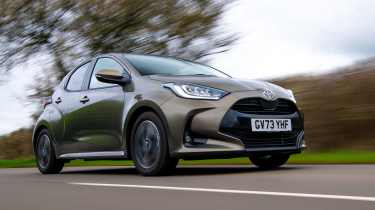
Full hybrids – also known as parallel hybrids – are what most people think of when they hear the term. These cars can be powered by the engine, the electric motor, or a combination of the two. The system is designed to switch seamlessly between modes depending on your speed and driving conditions.
Typically, a full hybrid can operate in electric-only mode at low speeds, making it ideal for urban driving. However, don’t expect to cover much ground in EV mode – the small battery isn’t built for long distances. Instead, it’s there to assist the petrol engine, boosting efficiency and reducing fuel consumption when both power sources work together.
One of the major benefits of full hybrids is that they don’t need to be plugged in to be topped up. The battery charges itself via regenerative braking or using the engine, so there’s no need to hunt for a charging point. Even if the battery is depleted, the car will continue to function as a standard petrol or diesel vehicle.
Toyota has long been the leader in this segment, with models like the Prius, Corolla, Yaris and RAV4 cementing its reputation. The brand markets these as ‘self-charging hybrids’ to differentiate them from plug-in hybrids, which we’ll get to shortly. Its luxury arm, Lexus, also focuses heavily on full hybrids, offering petrol-electric versions of every model in its range.
That said, it’s worth noting that while the electric mode might seem like a greener option in town, the electricity comes from burning fuel. In most cases, allowing the hybrid system to manage power delivery automatically is more efficient than forcing the car into EV mode.
Mild hybrids
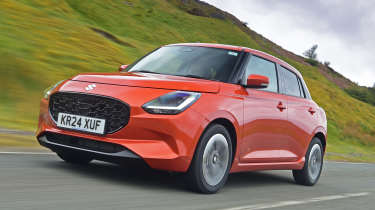
Mild hybrids are a simpler, more cost-effective introduction to hybrid technology. Unlike full hybrids, they can’t run on electric power alone. Instead, a small electric motor works alongside the engine, providing assistance during acceleration or in stop-start traffic.
These systems rely on energy recovered during braking, which is stored in a small battery. This energy is then used to reduce the load on the engine, improving fuel efficiency and cutting emissions. However, the gains are modest compared with other hybrid systems, and mild hybrids are best suited to drivers looking for a straightforward, budget-friendly option.
You’ll find mild-hybrid technology in everything from the Suzuki Swift to premium models from Mercedes and Audi. Some systems don’t even assist the engine directly, but instead use the energy to power other functions, such as air-conditioning. Even so, manufacturers often label these cars as hybrids, which can be misleading.
Plug-in hybrids (PHEVs)
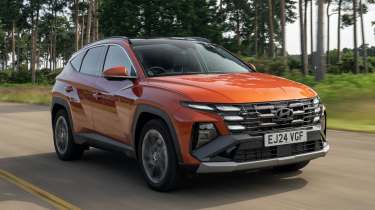
Plug-in hybrids represent a step closer to fully electric vehicles, with larger batteries that can be charged from an external power source. Unlike full hybrids, PHEVs can cover significant distances on electric power alone. For drivers with short commutes or access to charging points at home or work, this can result in minimal petrol or diesel use.
However, the benefits of a PHEV depend heavily on how it’s used. Regular charging is essential to take advantage of the electric-only range. Many owners, unfortunately, treat PHEVs as standard hybrids, never plugging them in. This defeats the purpose entirely, because the additional weight of the larger battery and electric motor increases fuel consumption when running on petrol alone.
When used correctly, though, PHEVs offer the best of both worlds: zero-emissions driving for shorter trips, and the flexibility of a petrol engine for longer journeys.
With the growing number of plug-in hybrids on the market, there’s now a model to suit almost everyone. If you’re looking for an affordable family hatchback, options like the Vauxhall Astra PHEV and Peugeot 308 PHEV stand out. Meanwhile, those who need more space can choose from a range of SUVs, including the Kia Sportage PHEV and Hyundai Tucson PHEV.
For drivers looking for something more upmarket, brands like BMW, Mercedes, and Volvo all offer plug-in options, combining premium interiors with the cost-saving potential of electric power. And if you want to go all out, there’s the Porsche Panamera Turbo S E-Hybrid – a 771bhp super-saloon that combines staggering performance with remarkably low running costs when driven sensibly.
Now you’ve got a handle on the different types of hybrid car on sale today, why not check out our list of the most economical cars...
Find a car with the experts




